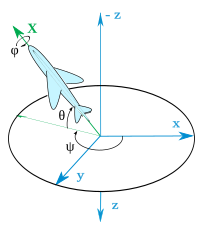Axes conventions

Axes conventions are like the rules you have to follow when you draw a map or a graph. They are a way to make sure that everyone who looks at your map or your graph can understand it easily.
Imagine you have a piece of paper that is divided into four squares. You want to draw a picture of a house in one of the squares. To do that, you have to choose which way you want to draw the house, right? You could choose to draw it sideways, or upside down, or any other way you want.
Axes conventions tell you which way you have to draw the house, or any other thing you are drawing. They tell you which direction is up and down, which direction is left and right, and which direction is front and back.
For example, in a graph, the horizontal axis is usually the one that goes left and right, and the vertical axis is the one that goes up and down. This is important because it helps you read the information correctly. If the axes weren't labeled properly, you might think that something is going up when it's really going down.
So, axes conventions are basically a set of rules that help us make sure that everyone can read and understand our maps, graphs, and other drawings easily. They make things more organized and help us communicate information more effectively.
Imagine you have a piece of paper that is divided into four squares. You want to draw a picture of a house in one of the squares. To do that, you have to choose which way you want to draw the house, right? You could choose to draw it sideways, or upside down, or any other way you want.
Axes conventions tell you which way you have to draw the house, or any other thing you are drawing. They tell you which direction is up and down, which direction is left and right, and which direction is front and back.
For example, in a graph, the horizontal axis is usually the one that goes left and right, and the vertical axis is the one that goes up and down. This is important because it helps you read the information correctly. If the axes weren't labeled properly, you might think that something is going up when it's really going down.
So, axes conventions are basically a set of rules that help us make sure that everyone can read and understand our maps, graphs, and other drawings easily. They make things more organized and help us communicate information more effectively.
Related topics others have asked about:
